
NPS/Andersonville National Historic Site Looking for a fun and educational way to learn about America's Civil War? Collect the National Park Service's Civil War to Civil Rights trading cards available, free, at select National Park Service sites in commemoration of the 150th Anniversary of the Civil War and the 50th Anniversary of the Civil Rights movement. View all the cards on Flickr. Andersonville National Historic Site offers a total of nine different cards: 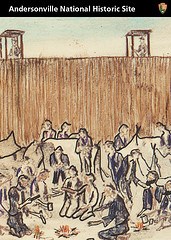
The Andersonville Stockade - OUT OF STOCK - Late in the Civil War, large prisons became necessary when prisoner exchanges broke down over the treatment of black soldiers. Andersonville prison was a 26 ½ acre field surrounded by 15-foot-high walls, with intermittent guard boxes along the perimeter. This stockade provided no shelter, except for what the prisoners brought in or built themselves. 
Captain Henry Wirz - OUT OF STOCK -
Captain Henry Wirz was the Confederate commanding officer at Andersonville Prison. Wirz oversaw only the prison stockade, and depended on other officers for guards and supplies. At the end of the war, Wirz was tried by a military court for the mistreatment and death of prisoners. Found guilty, he was executed in November 1865. 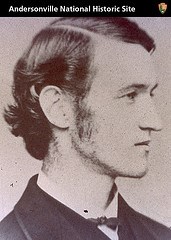
Dorence Atwater: Keeper of the Death Register - OUT OF STOCK -
Dorence Atwater, a prisoner of war at Andersonville, was required to keep a register of prisoners who died. Appalled by the high death rate, he was moved to action. Atwater secretly copied the register, preserving the names of nearly 13,000 prisoners who perished at Andersonville. As a result, fewer than 500 graves are marked "unknown." 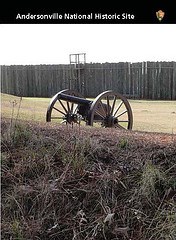
Earthworks The Footprints of War
In 1864, prisoners and slaves were compelled to build mounds of dirt around the perimeter 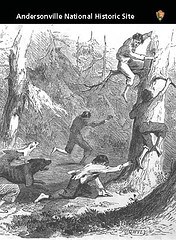
"Escape Was Almost Impossible"
Escape attempts were a daily occurrence, yet rarely successful. Prison records indicate that 328 men briefly escaped from the Andersonville prison; less than two dozen men reached the safety of Union lines. Escaped prisoners were hunted by packs of bloodhounds, and upon return punished severely in chain-gangs or stocks. 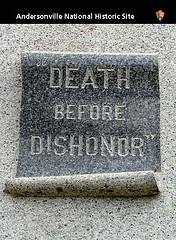
"Galvanized" Yankees: Would you Switch Sides?
While prisoners at Andersonville sought respite from the horrors of imprisonment through escape, few were successful. However, by the autumn of 1864, they were given the option of release by becoming Confederate soldiers. Over 300 prisoners at Andersonville chose to 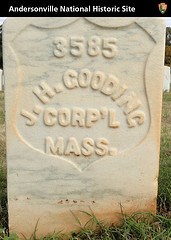
James H. Gooding - OUT OF STOCK -
A sailor in the whaling industry before the war, Gooding answered the call for black soldiers and joined the 54th Massachusetts Infantry. He documented his service in letters published in the New Bedford Mercury newspaper. Corporal Gooding was captured at the battle of Olustee, Florida, on February 20, 1864, and held captive at Andersonville until his death July 19. 
The Prison Hospital at Andersonville
A prisoner remarked, "It was the general expectation, when any went into the hospital, that it was the last of earth for them; and how could it be otherwise?" The hospital consistently lacked proper nurses or sufficient supplies. Many prisoners avoided the hospital completely, in favor of dying surrounded by friends in the stockade. 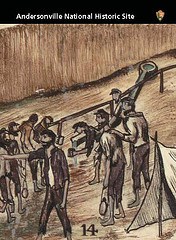
Providence Spring
Prisoners at Andersonville constantly suffered from the lack of clean drinking water. In August 1864, at the deadliest part of the summer, prisoners prayed for water. In an |
Last updated: July 22, 2022
